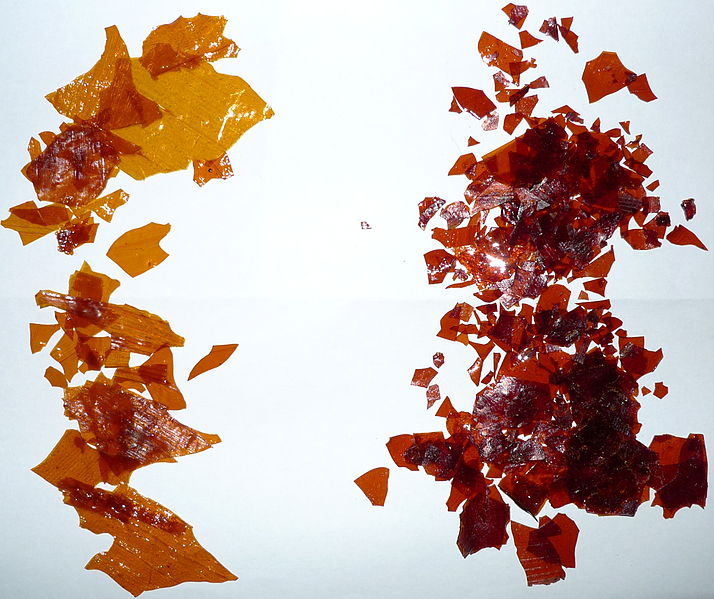 |
| Lac bug. Image from Wikipedia.com |
Shellac comes from the secretions on the outside of the female scale insect, the lac bug Kerria lacca. This bug is found primarily in India where it can coat trees in with secretions when they get in very large numbers. Their natural reddish color was also used for a red pigment in cosmetics as well, but the insects were primarily used to get the coating for the varnish. The varnish was even used in paintings for color or protection. Colors for shellac ranged from yellow to brown or red, and depended on the insect's food sources.
 |
| Live lac bugs on a branch. Image from Wikipedia.com |
 Finding shellac today is fairly difficult these days, and even though there are testimonials about how its still a great finish compared to synthetics, its usually restricted to antique dealers that work with furniture. Other uses of shellac have been found, though, including medications and other coatings. Bug Girl, who blogs about insects as well, has this great blog post about shellac and its use in candy coatings! Shellac in its dried form is shown on the left. The orange shellac on the left was often used on pine-wood paneling in the Southern United States, and the reddish shellac on the right was used as another color type.
Finding shellac today is fairly difficult these days, and even though there are testimonials about how its still a great finish compared to synthetics, its usually restricted to antique dealers that work with furniture. Other uses of shellac have been found, though, including medications and other coatings. Bug Girl, who blogs about insects as well, has this great blog post about shellac and its use in candy coatings! Shellac in its dried form is shown on the left. The orange shellac on the left was often used on pine-wood paneling in the Southern United States, and the reddish shellac on the right was used as another color type.Hopefully I can track some down so that we can have some for the opening and to show another neat way insect products have benefited our society! Check out the video to learn more :)
No comments:
Post a Comment